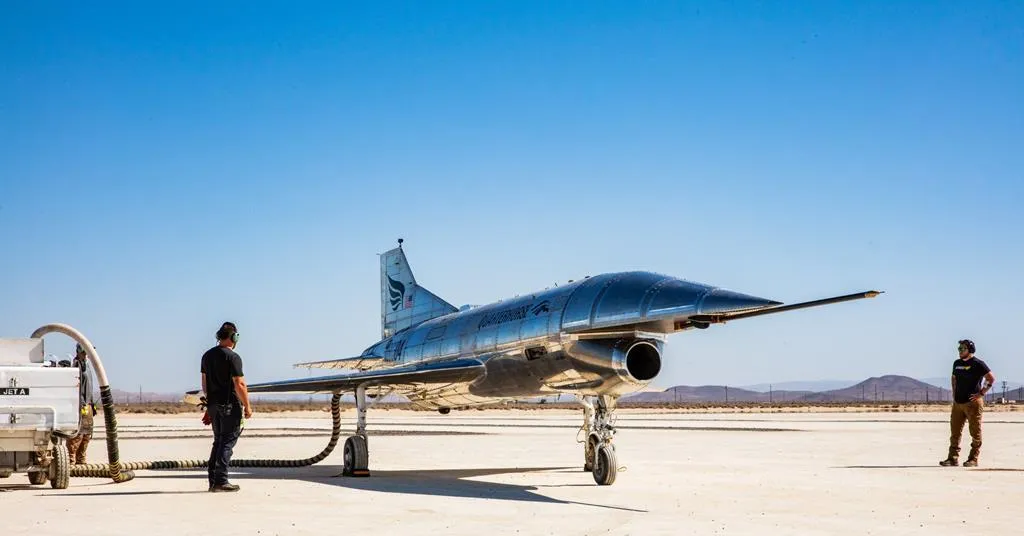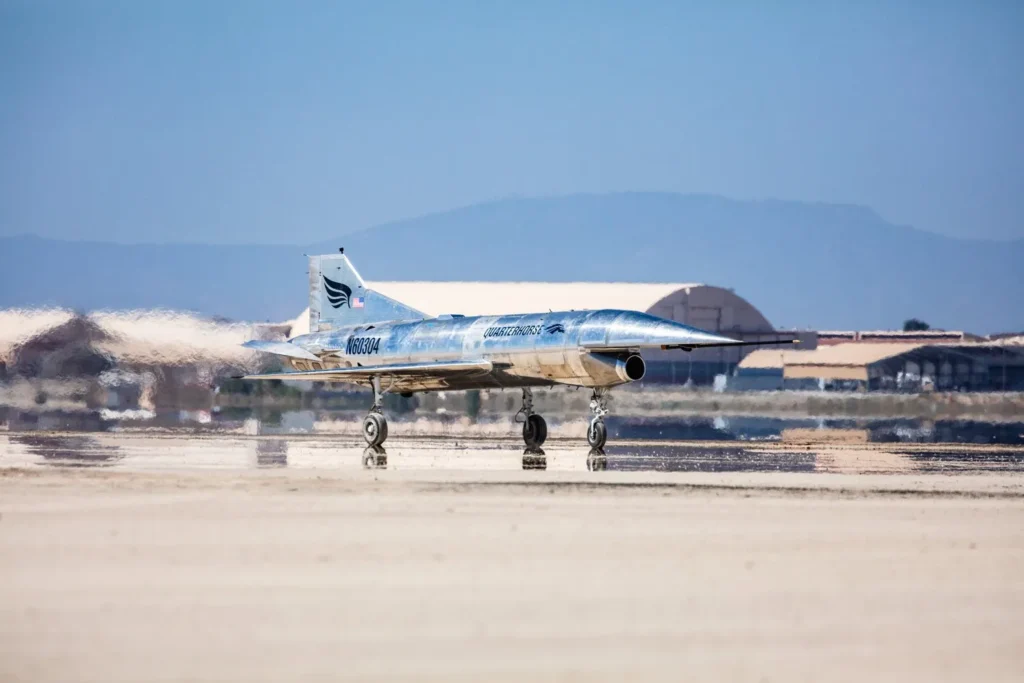
Hermeus Achieves Key Milestone with Quarterhorse Mk 1 Flight at Edwards AFB
Hermeus, a venture capital-backed aerospace and defense technology company committed to revolutionizing high-speed flight, has achieved a significant milestone with the successful flight of its Quarterhorse Mk 1 aircraft. The test flight, conducted at the iconic Edwards Air Force Base in California, marks a pivotal step in Hermeus’ mission to rapidly develop and operationalize hypersonic technologies for defense and national security applications.
With this flight, Hermeus has demonstrated not only the viability of its engineering approach but also the strength of its unique development philosophy. The company is focused on delivering high-Mach and hypersonic aircraft using an iterative and hardware-intensive strategy that stands in contrast to traditional aerospace development models.
A New Chapter in Aviation Innovation
“The Quarterhorse Mk 1 has redefined the pace of developing and flying new aircraft,” said AJ Piplica, CEO and Co-Founder of Hermeus. “I’m incredibly proud of what our team has accomplished. We’ve proven the viability of our iterative development approach. But this is just the start. We have much more to do as the bar rises for the next iteration.”
Quarterhorse Mk 1’s journey from a clean sheet design to flight-ready status was achieved in just over a year—a timeline that is exceptionally ambitious in the aerospace industry. This achievement is a testament to Hermeus’ commitment to speed, agility, and innovation in aerospace development.
Focus on High-Speed Takeoff and Landing
The primary objective of the Quarterhorse Mk 1 test campaign was to validate high-speed takeoff and landing capabilities for a large uncrewed aircraft. These operations are particularly challenging due to the aircraft’s unique aerodynamic configuration, which is optimized for high-Mach flight rather than conventional low-speed handling. Despite this inherent complexity, the flight successfully demonstrated that Hermeus’ design and engineering solutions are robust under real-world conditions.
The test also served as a proving ground for numerous subsystems and design models. According to Hermeus, data collected during the flight has already been instrumental in validating key performance aspects, including aerodynamics, stability, and control. Subsystems such as propulsion, fuel management, hydraulics, power distribution, thermal regulation, avionics, flight control software, telemetry, and command and control protocols were all rigorously tested and confirmed to perform as expected.
Strategic Collaboration with the U.S. Air Force
Hermeus’ work is being closely followed and supported by leaders within the U.S. Department of Defense, including those at the Air Force Test Center.
“Industry partnerships continue to have an important role in the development and test of disruptive and innovative capabilities for our warfighters,” said Major General Scott Cain, Commander of the Air Force Test Center. “The promise of routine hypersonic flight is an exciting capability for the joint team.”
This partnership underscores the strategic importance of hypersonic technologies in shaping the future of national defense. Hypersonic aircraft can travel at speeds exceeding Mach 5, enabling rapid response capabilities and giving the U.S. military a critical edge in global operations.
Building Momentum Through Iteration
Unlike conventional aircraft development programs that often span decades and rely on monolithic design cycles, Hermeus has adopted a rapid, iterative approach. This philosophy centers around building “hardware-rich” programs where multiple prototypes are developed, flown, and refined in rapid succession. This not only accelerates learning but also enables Hermeus to take calculated risks with each iteration—advancing innovation while managing technical uncertainties.
Quarterhorse Mk 1 is the first in a planned series of uncrewed, high-speed aircraft that Hermeus intends to develop. Its successful flight has set the stage for the next iteration: Quarterhorse Mk 2.
Next in Line: Quarterhorse Mk 2

Currently under construction at Hermeus’ headquarters in Atlanta, Georgia, the Quarterhorse Mk 2 will build upon the lessons learned from its predecessor. Designed at the scale of an F-16 fighter jet, Mk 2 is a more advanced, high-Mach aircraft aimed at de-risking uncrewed supersonic flight. The aircraft will incorporate new systems, materials, and design enhancements to push performance even further.
According to the company, Quarterhorse Mk 2 is on track to make its maiden flight later this year, continuing Hermeus’ commitment to executing on aggressive development timelines.
“The real-world flight data from Mk 1 provides significant technical value that we’re rolling into our next aircraft,” said Skyler Shuford, President and Co-Founder of Hermeus. “Moreover, the team has accomplished this milestone on a challenging timeline while operating within the broader aerospace ecosystem—all to support rebuilding America’s lost capability to quickly develop brand-new, full-scale jets.”
Reimagining American Aerospace
Hermeus was founded with a bold mission: to radically accelerate the pace of aviation innovation. The company is not just building aircraft; it is attempting to rewrite the rulebook for aerospace development in the United States. In doing so, it aims to restore a capability that once defined the American aerospace industry—namely, the ability to design, develop, and fly new aircraft platforms within short timeframes.
This mission has attracted strong support from both private investors and government stakeholders. As a venture capital-backed firm, Hermeus benefits from the flexibility and risk tolerance often lacking in traditional defense contractors. At the same time, its work is aligned with the strategic priorities of the U.S. Department of Defense, particularly in terms of delivering asymmetric capabilities that can reshape global power dynamics.
Enabling Strategic Advantages for Defense
In the near term, Hermeus is focused on developing products that deliver strategic advantages to the Department of Defense and allied partners. Hypersonic aircraft offer a range of potential benefits—from rapid global reach and enhanced ISR (intelligence, surveillance, reconnaissance) capabilities to survivability in contested environments where traditional platforms may be vulnerable.
Hermeus’ technology has the potential to support a wide variety of mission sets, including high-speed cargo delivery, tactical surveillance, and next-generation strike capabilities. By leveraging commercial development practices within a defense context, Hermeus is helping to bridge the gap between Silicon Valley-style innovation and Pentagon-level operational requirements.
With the successful flight of Quarterhorse Mk 1, Hermeus has validated the first steps in a larger journey toward operational hypersonic aircraft. The momentum generated by this milestone is already fueling the next phase of development, and the team at Hermeus is not slowing down.
As Quarterhorse Mk 2 nears completion, expectations are high for what the next round of testing will reveal. If Hermeus continues to meet its aggressive timelines and technical goals, the company could play a foundational role in restoring America’s capacity to lead in the next era of aviation.
For now, the skies above Edwards Air Force Base have borne witness to a new chapter in aerospace history—one that promises to reshape not just how we fly, but how fast we can build the future of flight.

